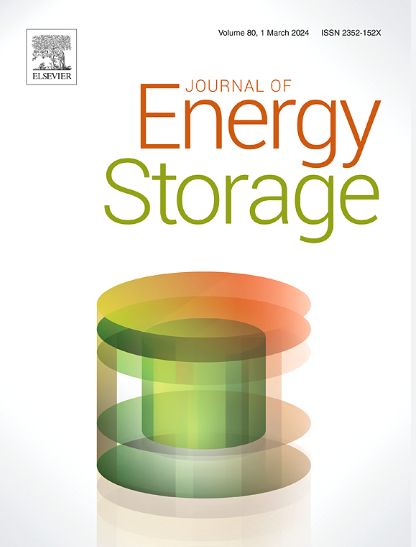Performance evaluation of laminar mixed convection of molten salt in a horizontal circular tube with non-uniform heat flux
IF 8.9
2区 工程技术
Q1 ENERGY & FUELS
引用次数: 0
Abstract
Molten salt is a prevalent heat transfer medium in thermal energy storage systems due to its excellent thermal properties. During engineering design, the laminar mixed convection often occurs in high-heat-flux tubes, thereby altering the flow and heat transfer characteristics. However, the use of traditional correlations in the design of thermal energy storage system can lead to substantial errors. To address this issue, the laminar mixed convection of molten salt in horizontal tubes under the non-uniform heat flux condition is investigated. Furthermore, the effects of tube diameter, inlet temperature, and heat flux are analyzed. Results showed that increasing heat flux and tube diameter boosts Nusselt number and thermal entropy production rate, yet reduces flow entropy production rate and exergy efficiency. Increasing heat flux and decreasing tube diameter decreases friction factor. Increasing inlet temperature decreases friction factor, flow and thermal entropy production rates, but increases exergy efficiency. Compared to forced convection, the friction factor, Nusselt number, flow entropy production rate and exergy efficiency increases by 47.03 %, 114.43 %, 62.90 %, 21.06 % at most for mixed convection under non-uniform heat flux conditions, respectively. However, the thermal entropy production declines by up to 51.82 %. By increasing heat flux, inlet temperature and tube diameter, the location, at where the buoyancy force takes effect, decreases. Finally, a new friction factor correlation with 3.75 % uncertainty and Nusselt number correlation with 15.00 % uncertainty are proposed. The investigation finding will not only help improve the design of thermal energy storage systems, but also will help to optimize heat transfer, minimize energy loss and improve safety.
非均匀热流密度水平圆管内熔盐层流混合对流性能评价
熔盐因其优异的热性能而成为储能系统中常用的传热介质。在工程设计中,在高热流密度的管道中经常发生层流混合对流,从而改变了管道的流动和换热特性。然而,在蓄热系统的设计中使用传统的相关系数会导致很大的误差。为了解决这一问题,研究了非均匀热流条件下水平管内熔盐的层流混合对流。此外,还分析了管径、进口温度和热流密度的影响。结果表明:增大热流密度和管径可提高努塞尔数和热熵产率,降低流熵产率和火用效率;增大热流密度,减小管径,减小摩擦系数。提高进口温度会降低摩擦系数、流量和热熵产率,但会提高火用效率。与强制对流相比,非均匀热流条件下混合对流的摩擦因数、努塞尔数、流熵产率和火用效率分别最大提高了47.03%、114.43%、62.90%和21.06%。然而,热熵产率却下降了51.82%。通过增加热流密度、进口温度和管径,浮力起作用的位置减小。最后,提出了新的不确定度为3.75%的摩擦因子和不确定度为15.00%的努塞尔数相关。研究结果不仅有助于改进储热系统的设计,而且有助于优化传热、减少能量损失和提高安全性。
本文章由计算机程序翻译,如有差异,请以英文原文为准。
求助全文
约1分钟内获得全文
求助全文
来源期刊

Journal of energy storage
Energy-Renewable Energy, Sustainability and the Environment
CiteScore
11.80
自引率
24.50%
发文量
2262
审稿时长
69 days
期刊介绍:
Journal of energy storage focusses on all aspects of energy storage, in particular systems integration, electric grid integration, modelling and analysis, novel energy storage technologies, sizing and management strategies, business models for operation of storage systems and energy storage developments worldwide.
 求助内容:
求助内容: 应助结果提醒方式:
应助结果提醒方式:


